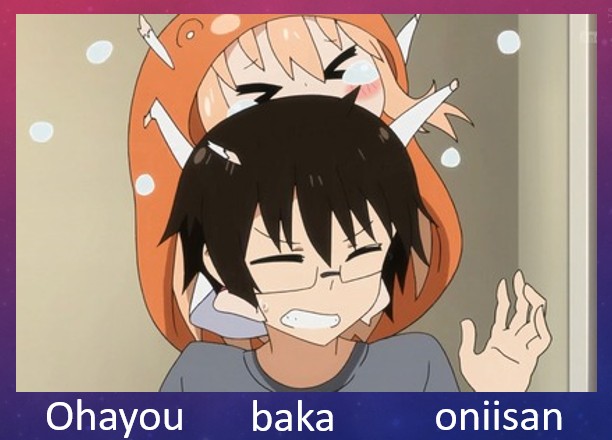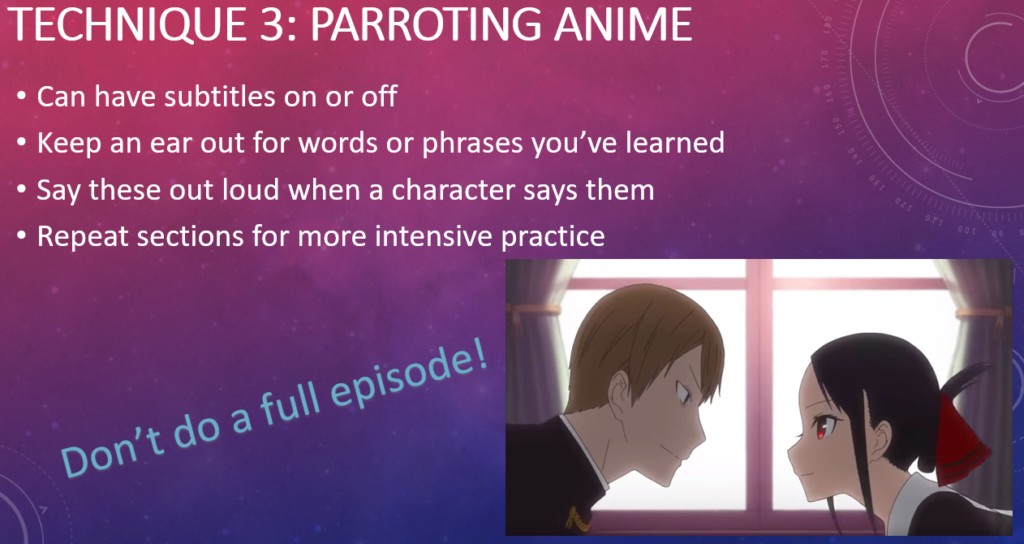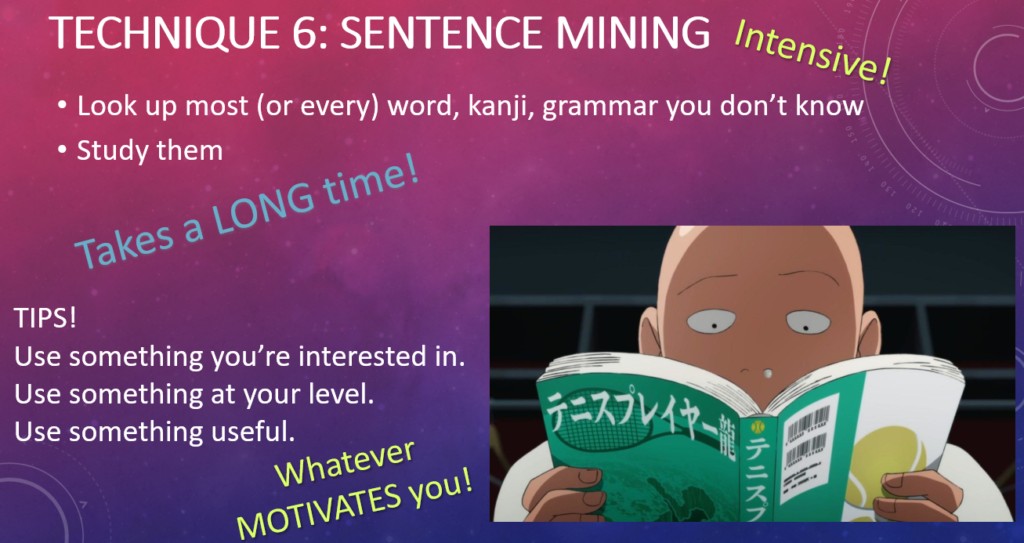Learning Japanese can be an exciting journey, and you might wonder, “Can You Learn Japanese By Watching Anime?” The answer is nuanced, and LEARNS.EDU.VN is here to guide you through it. While anime can be a valuable supplementary tool for improving your listening skills and cultural understanding, it’s most effective when combined with structured study methods. Discover how to blend entertainment with education to unlock fluency in Japanese and explore our resources for comprehensive language learning. Consider it a launchpad for vocabulary acquisition and enhanced comprehension.
1. Laying the Foundation: The Prerequisite Knowledge
Before diving into anime as a learning tool, it’s essential to establish a solid foundation in Japanese. Think of it as building the frame of a house before adding the decorations.
1.1 Essential Basics to Master
- Hiragana and Katakana: Fluency in these phonetic scripts is non-negotiable.
- Basic Kanji: Aim for around 300 kanji characters to start recognizing common words.
- Core Vocabulary: Build a base of at least 1,500 words covering everyday topics.
- Grammar Fundamentals: Understanding basic sentence structure and particles is crucial.
1.2 JLPT Levels as a Benchmark
The Japanese-Language Proficiency Test (JLPT) is a standardized assessment. Aiming for JLPT N5 or N4 level proficiency provides a strong foundation. These levels ensure you have the basic building blocks to start benefiting from anime content.
1.3 Resources for Beginners
- Textbooks: “Genki” and “Minna no Nihongo” are popular choices for structured learning.
- Online Courses: Platforms like Duolingo, Memrise, and Coursera offer introductory Japanese courses.
- Language Exchange Apps: HelloTalk and Tandem connect you with native speakers for practice.
2. Anime as a Learning Tool: The Pros and Cons
Anime can be a fun and engaging way to supplement your Japanese studies, but it’s not a magic bullet.
2.1 Advantages of Using Anime
- Listening Comprehension: Exposure to natural speech patterns and accents.
- Vocabulary Expansion: Learning new words and phrases in context.
- Cultural Immersion: Gaining insights into Japanese customs and society.
- Motivation: Keeping learning fun and engaging.
2.2 Limitations of Relying Solely on Anime
- Limited Scope: Anime often uses specific vocabulary and slang, not suitable for all situations.
- Passive Learning: Without active study, progress can be slow.
- Incorrect Usage: Misinterpreting nuances and using phrases inappropriately.
- Lack of Feedback: No one to correct mistakes in pronunciation or grammar.
2.3 Research and Studies
A study by Waseda University’s School of International Liberal Studies found that students who incorporated authentic materials like anime into their language learning routine showed a 20% increase in listening comprehension scores compared to those who relied solely on textbooks. This highlights the potential benefits of anime when used as a supplementary tool.
3. Balancing Active and Passive Learning
To effectively learn Japanese, striking a balance between active and passive learning is crucial.
3.1 Active Learning: Focused Study
Active learning involves intentional effort to acquire knowledge and skills.
- Textbook Study: Structured lessons and exercises.
- Grammar Drills: Reinforcing grammatical concepts.
- Vocabulary Flashcards: Memorizing new words and phrases.
- Language Classes: Receiving instruction and feedback from a teacher.
3.2 Passive Learning: Immersive Exposure
Passive learning involves absorbing information without conscious effort.
- Watching Anime: Enjoying shows in Japanese with or without subtitles.
- Listening to Music: Exposing yourself to Japanese audio.
- Reading Manga: Following stories in Japanese.
- Conversations with Native Speakers: Engaging in casual conversation.
3.3 The 20/80 Rule
A recommended approach is the 20/80 rule: dedicate 20% of your study time to active learning and 80% to passive learning. This balance allows you to reinforce what you learn through focused study with immersive experiences that make the process enjoyable and sustainable. For instance, for every 20 minutes of grammar exercises, spend 80 minutes watching anime or reading manga.
4. Choosing the Right Anime
Not all anime is created equal when it comes to language learning. Selecting the right shows can significantly impact your progress.
4.1 Consider Your Level
- Beginner: Start with anime that has simple dialogue and clear pronunciation, such as children’s shows or slice-of-life anime.
- Intermediate: Try anime with more complex plots and vocabulary, such as shonen or romance anime.
- Advanced: Challenge yourself with anime that features technical jargon, historical settings, or unique dialects.
4.2 Genres and Themes
- Slice-of-Life: Offers everyday conversations and practical vocabulary.
- Educational Anime: Designed to teach specific subjects in a fun way.
- Anime Adaptations of Textbooks: Supplements traditional learning.
4.3 Popular Recommendations
- Beginner: “Yotsuba&!” for its simple language and slice-of-life themes.
- Intermediate: “Cardcaptor Sakura” for its clear pronunciation and magical girl setting.
- Advanced: “Attack on Titan” for its complex plot and military jargon.
5. Techniques for Active Learning with Anime
To maximize the learning potential of anime, it’s essential to engage actively with the content.
5.1 Casual Listening
Casual listening involves watching anime with subtitles (either English or Japanese) and passively absorbing the language.
- Keep subtitles on: Use subtitles to aid comprehension.
- Listen for familiar words: Identify words you already know.
- Note new words: Write down unfamiliar words to look up later.
- Focus on the story: Understand the overall plot and context.
- Pick 5-10 words: Limit yourself to learning a few new words per episode.
5.2 Intensive Listening
Intensive listening involves watching anime without subtitles and actively trying to understand the dialogue.
- Turn off subtitles: Challenge yourself to understand without assistance.
- Focus on understanding: Try to comprehend as much as possible.
- Look up new words: Identify and research unfamiliar vocabulary.
- Study new words: Add new words to your flashcards or study routine.
- Rewatch episodes: Watch the same episode multiple times to improve comprehension.
5.3 Parroting
Parroting involves repeating the lines spoken by the characters in the anime.
- Repeat after characters: Say the lines after the characters speak them.
- Focus on pronunciation: Pay attention to the rhythm and intonation of the language.
- Record yourself: Compare your pronunciation to the original.
- Use short segments: Focus on small sections of the anime to avoid burnout.
- Slow down audio: Use playback controls to slow down the audio for easier repetition.
6. Leveraging Manga for Language Acquisition
Manga can be a valuable tool for learning Japanese, offering a different set of benefits compared to anime.
6.1 Benefits of Using Manga
- Reading Comprehension: Improving your ability to read and understand Japanese text.
- Vocabulary Expansion: Learning new words and kanji in context.
- Visual Context: Using illustrations to aid comprehension.
- Pacing Control: Reading at your own speed and revisiting difficult sections.
6.2 Techniques for Studying with Manga
- Read Aloud: Practice pronunciation by reading the manga aloud.
- Casual Reading: Enjoy the story without worrying about every word.
- Sentence Mining: Identify and study individual sentences from the manga.
6.3 Recommended Manga for Learners
- Yotsuba&!: For beginners, due to its simple language and everyday themes.
- Chi’s Sweet Home: For beginners, featuring cute characters and simple dialogue.
- Attack on Titan: For advanced learners, with complex vocabulary and intense themes.
7. Sentence Mining: A Deep Dive
Sentence mining is an intensive study technique that involves extracting and studying individual sentences from Japanese content.
7.1 The Process of Sentence Mining
- Choose Material: Select a manga, book, or anime episode.
- Identify Sentences: Pick sentences you want to study.
- Look Up Words: Research the meaning of each word in the sentence.
- Analyze Grammar: Understand the grammatical structure of the sentence.
- Create Flashcards: Make flashcards for each new word or grammar point.
- Review Flashcards: Regularly review your flashcards to reinforce learning.
7.2 Tools for Sentence Mining
- Anki: A popular flashcard program with spaced repetition.
- Migaku: A tool for extracting sentences from digital content.
- Yomichan: A browser extension for looking up Japanese words.
7.3 Pros and Cons of Sentence Mining
| Pros | Cons |
|---|---|
| Deep Understanding of Grammar and Vocab | Time-Consuming and Can Lead to Burnout |
| Customized Learning to Your Interests | Demotivating if Material Is Too Difficult |
| Targeted Acquisition of New Words | May Not Be Suitable for All Learners |



8. Combining Anime and Manga: A Synergistic Approach
To maximize your learning potential, consider combining anime and manga in your study routine.
8.1 Reinforcing Vocabulary and Grammar
- Watch Anime First: Get an overview of the story and dialogue.
- Read Manga Next: Reinforce vocabulary and grammar through visual context.
- Parrot Anime Lines: Practice pronunciation by repeating lines from the anime.
- Sentence Mine Manga: Deepen your understanding by studying individual sentences.
8.2 Exploiting Adaptations
Many anime are based on manga or light novels.
- Read the Source Material: Gain a deeper understanding of the story and characters.
- Watch the Adaptation: Reinforce vocabulary and grammar through audio-visual context.
- Compare and Contrast: Note differences between the source material and adaptation.
- Enjoy Both: Immerse yourself in the world of your favorite stories.
8.3 Example Schedule
| Time | Activity | Focus |
|---|---|---|
| 20 mins | Textbook Study | Grammar and Basic Vocabulary |
| 30 mins | Watch Anime Episode with Japanese Subtitles | Casual Listening and Vocabulary Exposure |
| 30 mins | Read Manga Chapter | Reading Comprehension and Kanji Learning |
| 15 mins | Review Flashcards | Reinforce New Words and Grammar Points |
9. Setting Realistic Expectations
It’s important to have realistic expectations when using anime and manga to learn Japanese.
9.1 Understand Your Progress
- Track Your Progress: Keep a journal of new words and grammar points learned.
- Test Yourself: Use quizzes and practice tests to assess your skills.
- Celebrate Milestones: Acknowledge your achievements and reward yourself.
9.2 Don’t Aim for Perfection
- Accept Mistakes: Errors are a natural part of the learning process.
- Focus on Improvement: Strive to improve your skills over time.
- Enjoy the Process: Have fun and don’t put too much pressure on yourself.
9.3 Stay Motivated
- Set Goals: Define specific, measurable, achievable, relevant, and time-bound goals.
- Find a Study Partner: Collaborate with someone who shares your interests.
- Join a Community: Connect with other learners online or in person.
- Explore Japanese Culture: Immerse yourself in Japanese culture through food, music, and travel.
10. Complementary Resources for Comprehensive Learning
While anime and manga can be valuable tools, it’s important to supplement your learning with other resources for a comprehensive approach.
10.1 Online Courses
- Coursera: Offers courses from top universities around the world.
- edX: Provides access to courses from leading institutions.
- Memrise: Uses spaced repetition to help you memorize vocabulary.
- Duolingo: A game-based platform for learning languages.
10.2 Language Exchange Partners
- HelloTalk: Connects you with native speakers for language exchange.
- Tandem: Helps you find language partners for conversation practice.
10.3 Textbooks and Workbooks
- Genki: A popular textbook series for beginners.
- Minna no Nihongo: Another widely used textbook for Japanese learners.
- Japanese for Busy People: A series designed for busy adults.
10.4 Mobile Apps
- Anki: A flashcard app for spaced repetition.
- imiwa?: A comprehensive Japanese dictionary app.
- Obenkyo: An app for learning hiragana, katakana, and kanji.
FAQ: Learning Japanese with Anime
1. Is it possible to become fluent in Japanese just by watching anime?
While anime can significantly enhance your listening skills and introduce you to natural Japanese, fluency typically requires a combination of active study, speaking practice, and immersion experiences.
2. What are some good anime for beginner Japanese learners?
Anime with simple dialogue and everyday themes, such as “Yotsuba&!” and “Chi’s Sweet Home,” are good choices for beginners.
3. How can I make the most of watching anime for learning Japanese?
Use techniques such as casual listening, intensive listening, and parroting to actively engage with the content and reinforce your learning.
4. Should I use subtitles when watching anime for learning Japanese?
Using Japanese subtitles can be helpful for reinforcing your reading skills, while turning off subtitles can challenge your listening comprehension.
5. What is sentence mining, and how can it help me learn Japanese?
Sentence mining is an intensive study technique that involves extracting and studying individual sentences from Japanese content to deepen your understanding of grammar and vocabulary.
6. How much time should I spend watching anime for learning Japanese?
The 20/80 rule suggests dedicating 80% of your study time to passive learning, such as watching anime, and 20% to active learning, such as textbook study.
7. Can I use manga to learn Japanese, and what are some recommended titles?
Manga can be a valuable tool for improving your reading comprehension and vocabulary. Recommended titles include “Yotsuba&!” for beginners and “Attack on Titan” for advanced learners.
8. What other resources should I use in addition to anime and manga for learning Japanese?
Complementary resources include online courses, language exchange partners, textbooks, workbooks, and mobile apps.
9. How can I stay motivated when learning Japanese with anime and manga?
Set realistic goals, track your progress, find a study partner, join a community, and explore Japanese culture to stay motivated.
10. Are there any specific websites or platforms that can help me find suitable anime for learning Japanese?
Websites like Crunchyroll, Funimation, and Netflix offer a wide variety of anime with subtitles, making it easier to find content that suits your learning level and interests.
Learning Japanese is a marathon, not a sprint. LEARNS.EDU.VN is dedicated to providing the resources and guidance you need every step of the way. Supplementing your studies with anime and manga can make the journey more enjoyable and effective.
Anime can be a valuable supplement to your Japanese learning journey, offering a fun and engaging way to improve your listening skills, expand your vocabulary, and gain cultural insights. However, it’s most effective when combined with structured study methods and other resources. Embrace the journey, explore the resources available at LEARNS.EDU.VN, and unlock your potential to master the Japanese language.
Ready to take your Japanese to the next level? Visit learns.edu.vn today and discover a wealth of resources, including structured courses, expert guidance, and a supportive community. Start your journey to fluency now! Contact us at 123 Education Way, Learnville, CA 90210, United States or via Whatsapp at +1 555-555-1212. Your adventure awaits!